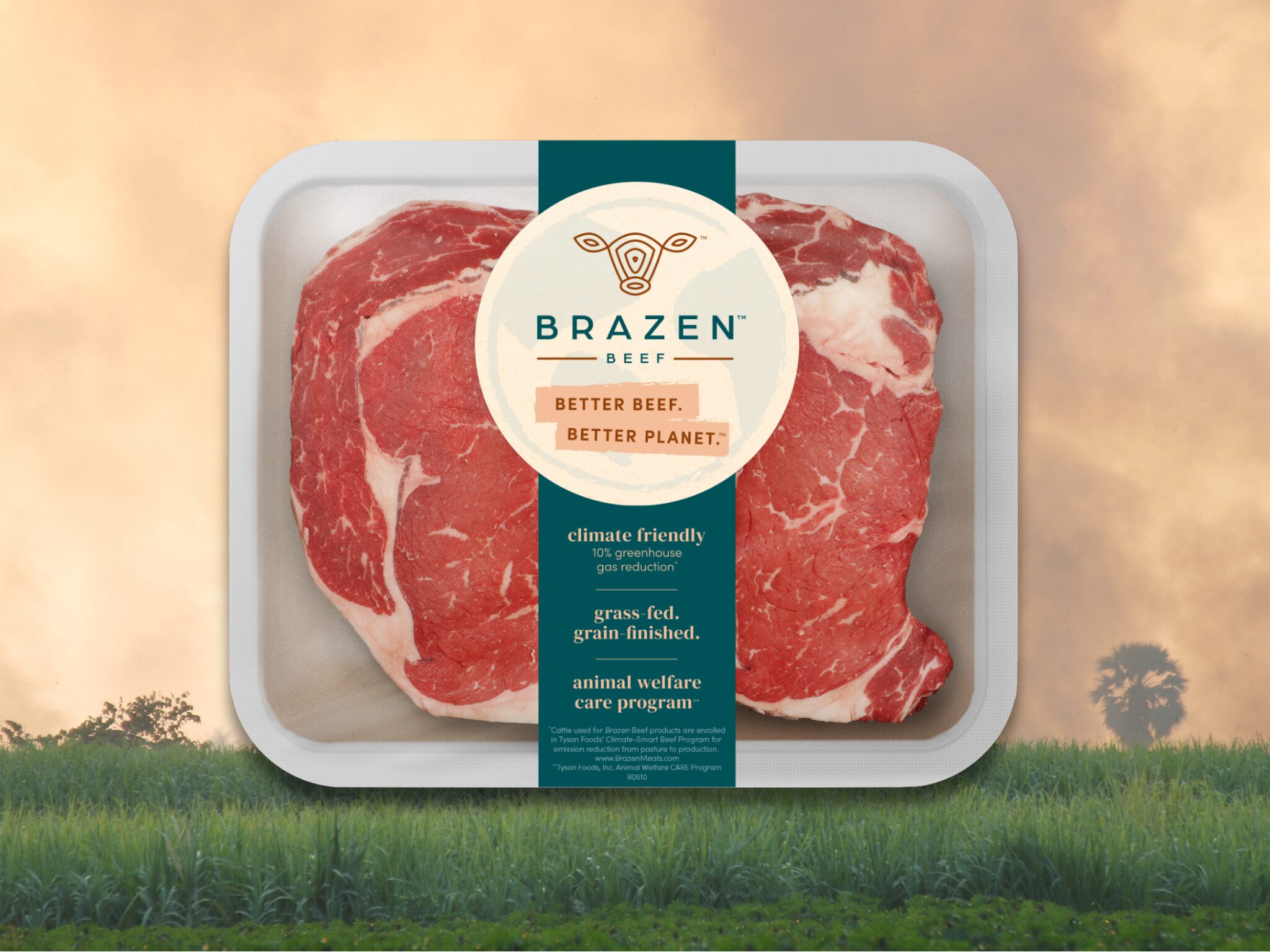USDA Targets Greenwashing with ‘Misleading’ Environmental Claims on Meat Labels
4 Mins Read
The USDA has updated its labelling guidelines to ensure that claims like ‘climate-friendly’ and ‘humanely-raised’ on meat labels are backed up with evidence.
In newly updated guidelines, the US Department of Agriculture (USDA) is eyeing greater transparency from meat producers that use terms like ‘climate-friendly’ on their product labels.
Asking companies to back up these voluntary claims, the USDA says it “strongly encourages” third-party verification to substantiate the animal welfare and environment-related statements, which have been criticised by activists as a form of greenwashing.
Many meat purveyors have been using phrases like ‘grass-fed’, ‘free-range’ and ‘regeneratively farmed’ on products like beef and eggs without much proof, despite these foods being associated with large carbon footprints as well as animal abuse. This misleads consumers, who may think they’re buying a sustainable and ethical product, when in reality, that might not be the case.
“USDA continues to deliver on its commitment to fairness and choice for both farmers and consumers, and that means supporting transparency and high-quality standards,” said US agriculture secretary Tom Vilsack. “These updates will help to level the playing field for businesses who are truthfully using these claims and ensure people can trust the labels when they purchase meat and poultry products.”
Antibiotic claims under the microscope

As consumers clamour for more sustainable products – and the world heats up faster than ever before – the livestock sector is facing widespread calls to reduce its carbon footprint.
Whether it’s doing that or not, it certainly wants you to think it is. Meat companies have come up with a host of terms and labels to describe their products – whether they’re about how the animals are raised, or how eco-friendly their products seemingly are.
To make these statements on packaging, producers have to submit documentation supporting these claims, which are reviewed by the USDA’s Food Safety and Inspection Service (FSIS). But the FSIS now “strongly recommends” third-party certification too, arguing that this helps verify that their standards are being met on the farm itself.
This “helps ensure that such claims are truthful and not misleading”, the FSIS says, although it adds that these third-party bodies need to be “credible and reliable”. These organisations should employ auditors who have relevant knowledge and experience to complete a certification, and have written measures to protect against conflicts of interest.
The revised guideline stresses the need for more robust documentation for environment-related and animal-raising claims. And when it comes to “negative” antibiotic use claims – like ‘raised without antibiotics’ or ‘no antibiotics ever’ – third-party validators should conduct routine sampling and testing programmes prior to slaughter.
The emphasis on the latter comes after a study by the FSIS and the USDA’s Agricultural Research Service found antibiotic residues in 20% of liver and kidney samples from cattle whose meat is sold in the ‘raised without antibiotic’ market.
And while the guidance’s voluntary language could have been stronger – “strongly encourages” is less effective than “mandates”, for example – the FSIS says it will “take enforcement action against any establishments found to be making false or misleading negative antibiotic claims”.
‘Climate-friendly’ labels work – and that’s a problem

The USDA’s clampdown – if you can call it that on these labels – is contradictory to its own heavily criticised Low Carbon Beef label.
The move follows a petition by climate advocacy non-profit the Environmental Working Group, asking the USDA to prohibit companies from marketing beef as climate-friendly. This was in direct response to the launch of ‘climate-friendly’ Brazen Beef by meat giant Tyson Foods, a result of its Climate-Smart Beef Program.
The label states that the beef represents a “10% greenhouse gas emissions reduction”, but there’s very little information about how this was achieved. Tyson Foods, however, seemed to successfully convince people that its beef was more sustainable than others by sporting the USDA’s Low Carbon Beef label.
This is one of a number of examples of greenwashing in this sector. Brazilian meat behemoth JBS, for instance, has been sued by New York attorney general Letitia James for misleading consumers about its climate goals. James argues that the company has profited from “fraudulent and illegal environmental marketing practices”.
These practices are common outside the US. In the UK, retailer Sainsbury’s unveiled a ‘lower-carbon’ beef product that still emitted more carbon than any other food product. And in Denmark, meat processor Danish Crown was found in violation of consumer marketing law by the Danish Western High Court, which ruled that its ‘climate-controlled’ pork label was misleading.
These efforts work. A University of Oklahoma study based on Tyson’s Brazen Beef found that 87% and 85% of Americans trust ‘climate-friendly’ and ‘low-carbon’ labels. And 15% believed that ‘climate-friendly’ beef had a smaller impact than pork, chicken or tofu – for context, beef is the highest-polluting foodstuff, with per kg emissions twice as high as the next on the list (dark chocolate).
The USDA’s new guidelines come just as a wave of state legislators continue to try and restrict phrases like ‘beef’ and ‘chicken’ on plant-based meat packaging, a much more pointless labelling war that serves to benefit a high-carbon sector while hurting dozens of businesses.



